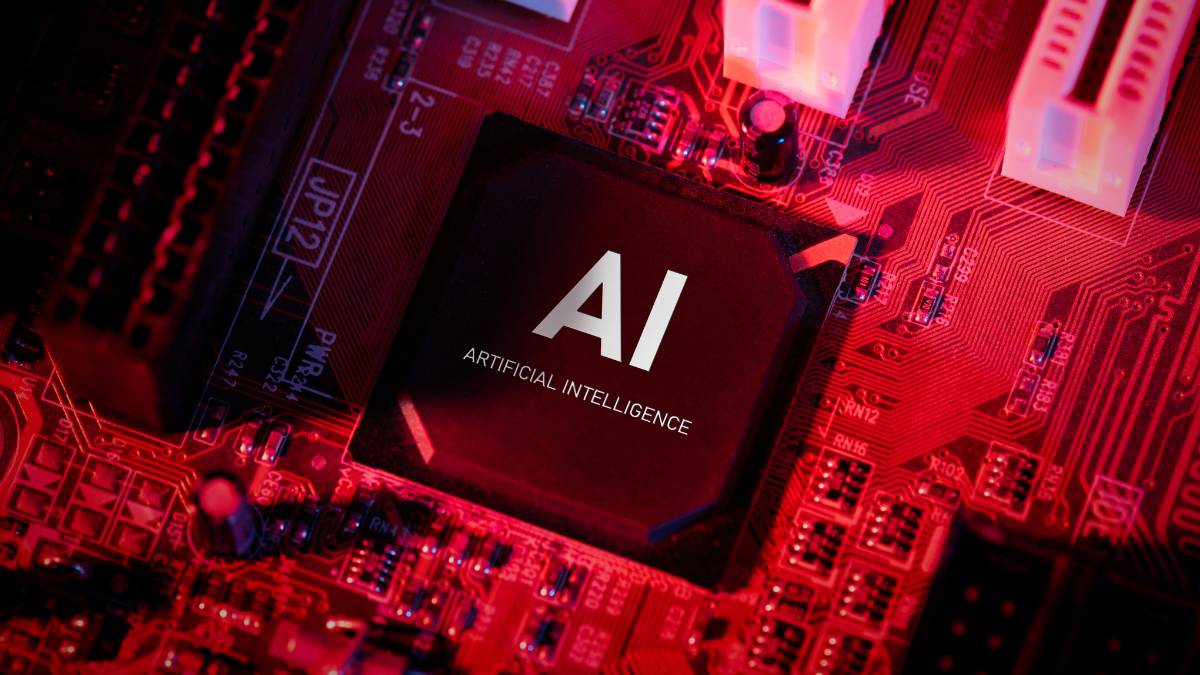AI agents are intelligent systems or software programs that can perceive their environment, make decisions, and take actions to achieve specific goals. They operate autonomously, meaning they don’t need constant human input to function. These agents are key components in many real-world applications like self-driving cars, voice assistants, and smart home devices.
There are different types of agents in AI, ranging from simple reflex-based systems to more advanced learning agents that improve over time. By combining sensors, logic, and sometimes learning algorithms, AI agents are able to interact with the world in a purposeful, often human-like, way to solve problems or automate tasks.
Table of Contents
What are AI agents and how do they work?
Alright, let’s start with the basics. If you’ve ever heard the term “agent” in AI and thought, “Wait, like a spy?” – you’re not alone. But in the world of Artificial Intelligence, an agent just means something (usually software, sometimes hardware) that observes its surroundings and takes action based on what it sees.
It follows a kind of loop:
- It senses what’s happening around it
- It decides what to do
- Then it does it.
This loop keeps going while the agent is active.
So what actually makes something an “agent”? For one, it needs to be able to perceive – that’s where sensors come in. These can be cameras, microphones, or even software that reads data inputs. Then it needs a way to act – which is where actuators show up. These might be robotic arms or even just software that moves a mouse pointer or triggers a command.
The environment is wherever this agent exists – it could be a physical space, like a kitchen, or a virtual one, like your browser. And finally, there’s something called a performance measure. That just means: how do we know the agent is doing a good job?
To keep it super simple:
An agent sees → thinks → acts → and (hopefully) learns or improves.
It’s not just reacting randomly. It’s trying to do something purposefully.
Why are agents important in Artificial Intelligence?
Here’s the thing: without agents, AI would just be a really smart calculator. It might give you an answer when you ask, but it wouldn’t do anything on its own.
Agents are what make AI feel “alive” – not in a creepy sci-fi way, but in a practical, useful way.
Take self-driving cars, for example. The car needs to make split-second decisions while driving. It can’t sit around waiting for someone to tell it what to do. It needs to sense the road, predict what’s about to happen, and make safe choices – all in real time. That’s what an AI agent does.
Same with voice assistants like Siri or Alexa. They listen to your voice (perception), figure out what you said (decision-making), and then respond or take action (like setting a reminder or playing music). That’s an agent system at work.
What’s cool is that agents help us model human-like thinking too. They let machines do things like plan ahead, make trade-offs, or adapt to new situations. So whether it’s helping you find the fastest route to work or adjusting your room temperature, agents are the part of AI that actually gets things done.
What are the main types of agents in AI?
Not all agents are created equal. Some are super basic, while others are really advanced and can even learn on their own. Let’s go through the main types so you can get a feel for how they differ.
1. Simple Reflex Agents
This is the most basic kind of agent. It doesn’t think much – it just follows “if this, then do that” rules.
Like:
If the room is cold → turn on the heater.
If there’s an obstacle → turn left.
That’s it. No memory. No thinking about what happened before.
Example: A thermostat. It checks the temperature and decides whether to turn heating on or off. It doesn’t remember yesterday’s weather or predict what’s coming. It’s just reacting to now.
Limitation: Because it doesn’t remember anything, it can’t deal with complicated situations. If it doesn’t see it, it doesn’t care.
2. Model-Based Reflex Agents
Now we’re getting a little smarter.
These agents still react to situations, but they also keep track of the world. They have a model – basically a kind of memory – that helps them make better decisions.
So instead of just reacting blindly, they can ask: “Where am I? What just happened? What’s likely to happen next?”
Example: Think of a robot vacuum (like Roomba). It doesn’t just bump into walls and turn randomly. It slowly builds a map of your house, so it knows where it’s already cleaned and where it still needs to go.
That little bit of memory? Huge difference.
3. Goal-Based Agents
These agents have a goal they’re trying to reach. So instead of just reacting to the current situation, they think: “What should I do to get to where I want to be?”
That requires some planning.
Example: Google Maps. When you enter your destination, it doesn’t just start giving you random directions. It looks at all the possible routes and figures out the best one to reach your goal.
Key difference: It’s not just reacting – it’s choosing actions based on a desired future.

Enroll Now: AI Marketing Course
4. Utility-Based Agents
Now we’re in more advanced territory.
These agents don’t just have a goal – they also care how good or bad an outcome is. That’s where something called a utility function comes in. Basically, they try to pick the action that will lead to the best overall result, not just any result.
Example: Netflix. It doesn’t just recommend anything you might want to watch – it tries to suggest what you’re most likely to enjoy, based on your mood, preferences, time of day, and more.
So instead of asking, “Did I reach the goal?” it asks, “Did I make the best choice?”
5. Learning Agents
Alright, this is where things get really interesting.
So far, we’ve looked at agents that react, remember, plan, and even try to make the best choice – but what happens when the agent doesn’t just follow rules or instructions… but actually gets better over time?
That’s what learning agents do.
They don’t just sit there doing the same thing over and over. They learn from what’s working and what’s not. Maybe they messed up earlier. Maybe something didn’t go the way they expected. Instead of giving up, they adjust – kind of like how we humans learn from experience.
Example: One example that always comes to mind is ChatGPT, or honestly any chatbot that adapts as it interacts with people. The more conversations it has, the better it gets at figuring out what people want. Or take AlphaGo – the AI that beat human Go champions. It didn’t just memorize a strategy. It trained by playing millions of games and learning from every single one.
These agents usually use methods like reinforcement learning, where they get rewards (or penalties) based on their actions – sort of like training a dog, but with algorithms.
What makes this exciting is that they don’t need to be reprogrammed all the time. They improve on their own. That makes them super useful in environments where things are always changing.
6. Specialized AI Agents (Bonus Section)
Alright, we’ve covered the core types – but there are some other interesting ones that don’t always fit neatly into a single category. Let’s go through a few special cases.
Multi-Agent Systems (MAS)
Imagine multiple agents working together – not just one brain, but a team.
That’s what happens in multi-agent systems. Think of a swarm of drones mapping a forest, or self-driving cars communicating with each other on the road to avoid accidents. Each one is an individual agent, but they’re also cooperating (or sometimes competing) in the same space.
It’s kind of like putting a bunch of little intelligent beings in the same room and watching how they interact. That comes with its own challenges and benefits.
Autonomous Agents
These are agents that operate without human help – like robots or autonomous vehicles. They often use multiple AI techniques at once: perception, planning, decision-making, and learning.
The important bit here is: they don’t wait for someone to tell them what to do. Once they’re running, they handle things on their own. A Mars rover, for example, has to navigate without real-time commands from Earth. That’s a pure autonomous agent.
Software Agents
Not every agent needs to live inside a robot. Some are totally virtual.
Your smart assistant – like Alexa, Siri, or Google Assistant – is a software agent. It listens to your voice, figures out what you want, pulls data from somewhere, and gives you an answer or performs a task. All of that happens behind the scenes, but it’s still perception → action.
What’s cool is that many software agents now also have context awareness. They’re not just reacting – they know your calendar, your habits, your preferences. So the decisions they make feel more personal and useful.
Also Read: AI in Digital Marketing
What’s the difference between goal-based and utility-based agents?
People often get a bit confused between these two, and honestly, it’s understandable – they sound similar.
Here’s a quick way to look at it:
| Feature | Goal-Based Agent | Utility-Based Agent |
| Focus | Reaching a specific goal | Maximizing the best outcome |
| Logic | “Did I succeed or fail?” | “Was this the best I could’ve done?” |
| Example | A car reaching a destination | A car choosing the safest and fastest route |
A goal-based agent is kind of binary. It wants to get to the goal, and it doesn’t really care how it gets there, as long as it does. A utility-based agent is more thoughtful – it asks, “Out of all the options, which one gives me the most value?”
So if both agents were asked to deliver a package, the goal-based one would pick any route that gets it there. The utility-based one would look at traffic, weather, safety, and cost – and pick the smartest route, not just any route.
Also Read: How to Use AI for Small Business Marketing
Real-life examples of AI agents in action
Let’s bring this down to earth. Here are a few real-world examples that show how these different agent types actually show up in things you may already use or recognize.
1. Tesla Autopilot (Learning + Goal-Based Agent)
Tesla’s driving system uses a ton of data from cameras, sensors, and past experiences to make real-time decisions on the road. It doesn’t just follow a GPS route – it adapts to road conditions, traffic, and even learns from how drivers behave. It’s learning constantly while aiming for the goal: safe and efficient driving.
2. Google Assistant (Utility-Based + Model-Based Agent)
When you ask Google something, it doesn’t just fetch an answer. It considers your location, calendar, past queries, and sometimes even time of day. It’s trying to give you the best answer – not just any answer. That’s utility in action.
3. Roomba Robot (Simple Reflex + Model-Based Agent)
Early Roombas were simple reflex agents – bump into a wall, turn. Newer models? They’ve got memory. They map your rooms, avoid wires and pets, and even schedule cleaning. They’ve moved up the agent ladder.
Also Read: AI in B2B Marketing
How do AI agents learn and evolve over time?
Okay, so we touched on learning agents earlier, but let’s zoom in a bit.
Two of the big methods behind AI learning are:
1. Reinforcement Learning
This is like trial and error, with rewards. The agent tries something, sees how it goes, and either gets a “good job!” or a “nope, try again.”
It’s how AlphaGo learned to beat human champions – by playing itself millions of times and slowly figuring out what works.
2. Neural Networks
This is more about pattern recognition. The agent feeds on large amounts of data and starts to notice connections – like how a spam filter figures out which emails are sketchy, or how image recognition tools know what a cat looks like.
Over time, with enough data and feedback, agents using these methods can improve in pretty amazing ways.
Are AI agents the same as AI models?
Short answer: Nope.
This one’s important. A lot of people use the terms interchangeably, but they’re not the same thing.
- An AI model is like a brain. It takes inputs and gives you outputs – predictions, classifications, etc.
- An AI agent is like a whole body. It uses models as tools to make decisions and take action in the world.
Example: ChatGPT is powered by a model (called GPT). But if you built a voice assistant that used GPT to talk to people, make calendar changes, send texts – that would be an agent.
So, models are part of agents, but agents are more than just models. They act, not just compute.
Also Read: AI in Marketing Strategy
Key Takeaways on Types of Agents in AI
- AI agents are systems that observe, decide, and act toward a goal.
- There are 5 core types: simple reflex, model-based, goal-based, utility-based, and learning agents.
- Agents like Roomba, Tesla Autopilot, and Google Assistant show these in action.
- Utility-based agents aim for the best outcome, not just any goal.
- AI agents use models, but they’re not the same thing – agents are action-focused systems.
Conclusion
AI agents aren’t just some tech buzzword, they’re what actually makes artificial intelligence do things. From the basic thermostat that reacts to temperature, to smart assistants that learn your habits, agents are behind the scenes, making decisions and taking action.
What sets them apart is their ability to sense the world around them, think about it (in their own way), and respond, often better over time. And as AI keeps evolving, these agents will become even more central to how we interact with technology daily. Whether you’re into robotics, automation, or just curious about how your phone seems to “get” you, understanding AI agents is a solid place to start. It’s not just about intelligence; it’s about doing something with it.
FAQs: Types of Agents in AI
Q1: What are the 5 types of AI agents?
Simple reflex, model-based reflex, goal-based, utility-based, and learning agents.
Q2: What’s an example of a simple reflex agent?
A basic thermostat – it checks the current temp and adjusts accordingly.
Q3: What’s the most advanced type of AI agent?
Learning agents. They can adapt over time, get smarter, and improve performance with experience.
Q4: Are all AI systems agents?
Nope. Only systems that perceive, decide, and act qualify as agents.
Q5: What’s a utility function in AI?
It’s a way for the agent to measure how good or bad an outcome is – so it can choose the best one.

